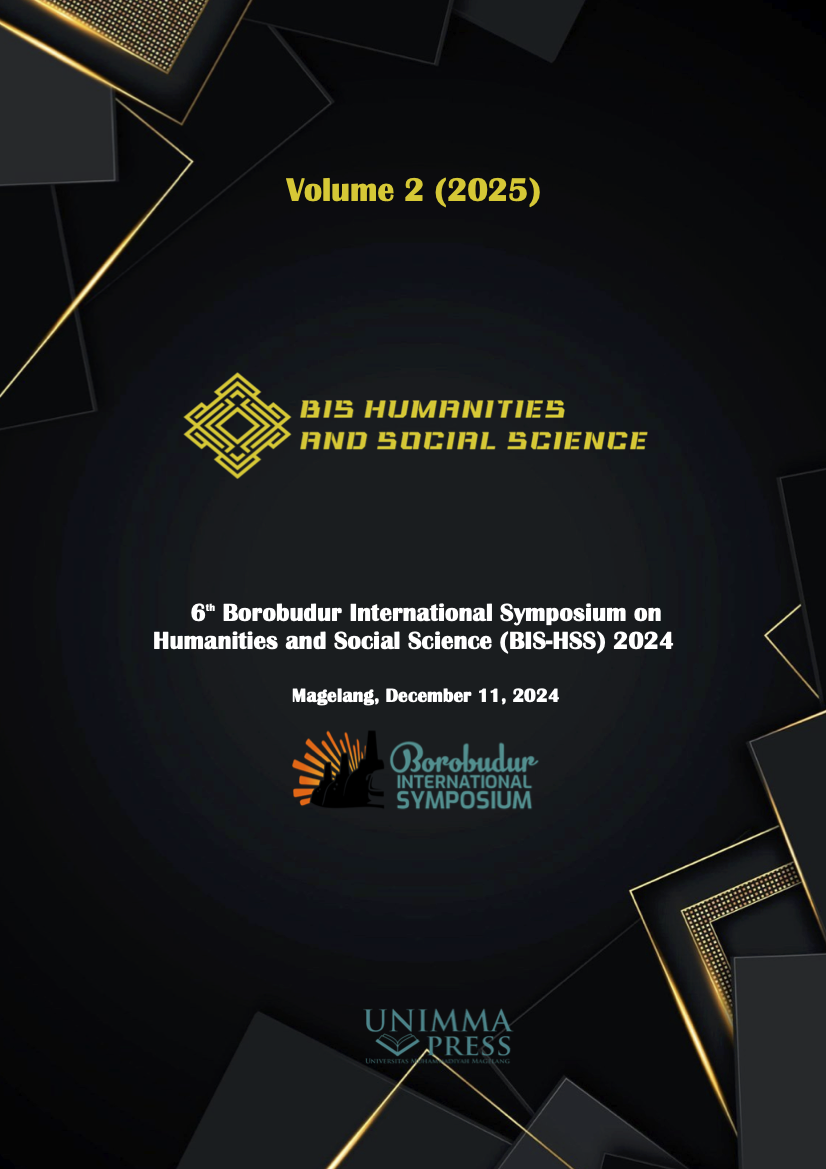“Pemuda Hebat” as a virtual community in tourism branding at Ponorogo
Keywords:
Virtual community, Branding, TourismAbstract
Virtual communities bring together people with different values and common interests on a massive scale through the internet. Virtual communities present a new form of urban life, and as a result of the adaptation of the technological environment that people in them build identities. Pemuda Hebat is one of the virtual communities, which seeks to brand tourism in Ponorogo. This article uses the constructivism paradigm with a case study method, used to examine the virtual community ‘pemuda hebat’ and the social interactions that exist within. This article uses a qualitative approach with descriptive methods, which is research used to research on natural object conditions, where the researcher is the key instrument. Data collection is in the form of words or pictures, so it does not emphasise only on numbers. The collected data is analysed and described so that it is easily understood by others. Then it is analysed inductively, and the results of qualitative research emphasise meaning rather than generalisation. This research aims to describe and analyze Pemuda Hebat as a virtual community in branding tourism. The data sources used in this research are library materials relevant to the research topic. Data collection in this research uses the documentation method, which is the process of searching for literature data related to the research topic. The data analysis technique in this research uses qualitative techniques with content analysis. The results of this study indicate that tourism branding efforts through virtual communities have a positive impact on tourist visits. The interaction built in the virtual community provides support between individuals to share information and skills in terms of branding the tourism potential of their respective villages. The researchers suggest that in order for this community to be sustainable, it needs the attention of the government as it plays an important role in the development of tourism in the area.
References
[1] M. A. Sovia and F. F. Tantiani, “Kualitas Pertemanan Dan Kohesivitas Pada Mahasiswa Anggota Komunitas Virtual Di Bidang Kesehatan Mental,” Jurnal Psikologi, vol. 16, no. 1, pp. 23–39, 2023, doi: 10.35760/psi.2023.v16i1.6910.
[2] C. Catherina, R. F. Boer, M. Talia, and S. Cecilia, “Pembentukan Konsep Keintiman Berdsarkan Social Information Processing Theory pada Komunitas Sehatmental.id,” Jurnal Komunikasi, vol. 14, no. 1, pp. 63–72, May 2020, doi: 10.21107/ilkom.v14i1.6035.
[3] G. I. Nooralam, “Kohesivitas Kelompok Dalam Komunitas Virtual Kaskus Regional Malang,” Journal Of Communication Science, 2015.
[4] P. Nurfitriana and N. Prihartanti, “Penyesuaian Diri Pada Mahasiswa Tahun Pertama Di Fakultas Psikologi Universitas Muhammadiyah Surakarta,” 2017.
[5] K. Dewi et al., “Strategi Meningkatkan Peran Media Sosial Dalam Membranding Destinasi Wisata Sebagai Media Pemasaran,” 2023. [Online]. Available: https://e-journal.iahn-gdepudja.ac.id/index.php/JW
[6] H. Taan, D. Lesmana Radji, H. Rasjid, and J. Manajemen Fakultas Ekonomi Universitas Negeri Gorontalo, “SEIKO : Journal of Management & Business Social Media Marketing Untuk Meningkatkan Brand Image,” SEIKO : Journal of Management & Business, vol. 4, no. 1, pp. 315–330, 2021, doi: 10.37531/sejaman.v4i1.1268.
[7] C. S. Chan and L. M. Marafa, “Branding places and tourist destinations: A conceptualisation and review,” in The Branding of Tourist Destinations: Theoretical and Empirical Insights, Emerald Group Publishing Ltd., 2018, pp. 15–42. doi: 10.1108/978-1-78769-373-920181002.
[8] Sugiyono, Metode Penelitian Kuantitatif, Kualitatif dan R & D. Bandung: CV. Alfabeta, 2020.
[9] M. Zusron Alfaqi, “Peran Pemuda Dalam Optimalisasi Branding Desa Wisata Edukasi Toleransi The Role Of Youth In Optimizing The Branding Of Tolerance Education Tourism Villages,” 2022. [Online]. Available: http://journal2.um.ac.id/index.php/jppk
[10] D. P. Ningrum, “Komunikasi Dan Optimalisasi Branding Pariwisata Berkelanjutan Di Seribu Batu Songgo Langit Yogyakarta,” Scriptura, vol. 12, no. 2, pp. 72–81, Jan. 2023, doi: 10.9744/scriptura.12.2.72-81.
[11] I. Gusti et al., “Strategi Branding Budaya Pariwisata 4.0 Melalui Digital Tourism Di Kabupaten Gianyar,” Jurnal Pendidikan Sosiologi dan Antropologi, vol. 6, no. 1, pp. 53–66, 2022.
[12] G. Y. Masyhari Makhasi and S. D. Lupita Sari, “Strategi Branding Pariwisata Indonesia Untuk Pemasaran Mancanegara,” ETTISAL Journal of Communication, vol. 2, no. 2, p. 31, Feb. 2018, doi: 10.21111/ettisal.v2i2.1265.
Downloads
Published
Conference Proceedings Volume
Section
License

This work is licensed under a Creative Commons Attribution-NonCommercial 4.0 International License.

